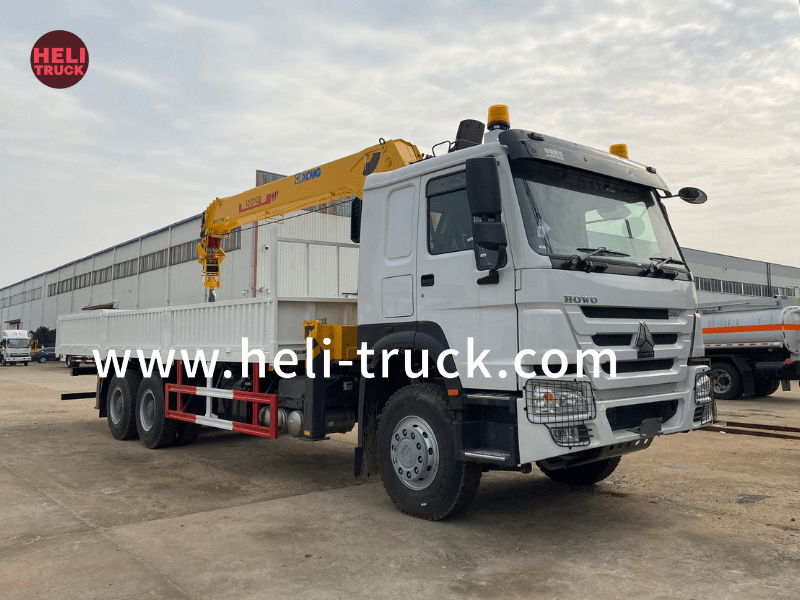Introduction
Work trucks are essential vehicles for various industries, providing the means to transport equipment, tools, and materials to job sites efficiently. One of the key components of a work truck is the flatbed, which serves as the platform for carrying and securing cargo. Choosing the right flatbed for your work truck is crucial to ensure maximum efficiency and versatility in your operations. In this comprehensive guide, we will explore the different flatbed options available for work trucks, highlighting their features, benefits, and applications.
Types of Work Truck Flatbeds
1. Steel Flatbeds
Steel flatbeds are among the most common and durable options available for work trucks. Constructed from high-strength steel, these flatbeds are capable of handling heavy loads and withstand rough working conditions. Steel flatbeds are popular in industries such as construction, landscaping, and agriculture, where ruggedness and durability are paramount. They are also relatively affordable compared to other materials.
Benefits of Steel Flatbeds:
- Excellent durability and strength
- Resistant to impact and abrasion

- Suitable for heavy-duty applications
- Can be customized with additional features such as toolboxes and stake sides
Applications of Steel Flatbeds:
- Construction: Transporting building materials, equipment, and machinery
- Landscaping: Carrying tools, supplies, and debris
- Agriculture: Hauling farm equipment, feed, and produce
2. Aluminum Flatbeds
Aluminum flatbeds offer a lightweight alternative to steel flatbeds while providing comparable strength and durability. These flatbeds are corrosion-resistant, making them ideal for industries where exposure to moisture and chemicals is a concern. Aluminum flatbeds are commonly used in industries such as transportation, oil and gas, and utility services.
Benefits of Aluminum Flatbeds:
- Lightweight construction reduces fuel consumption and improves payload capacity
- Corrosion-resistant for longevity and low maintenance
- High strength-to-weight ratio
- Can be customized with various accessories and configurations
Applications of Aluminum Flatbeds:
- Transportation: Ideal for hauling goods, equipment, and machinery
- Oil and Gas: Suitable for carrying pipes, tools, and supplies to remote locations
- Utility Services: Used for transporting equipment and materials for maintenance and repair work
3. Used refuse compactor trucks are a newer option in the market, combining the benefits of steel and aluminum flatbeds. These flatbeds are constructed from a composite material such as fiberglass reinforced plywood, offering a balance of strength, durability, and lightweight properties. Composite flatbeds are gaining popularity in industries such as telecommunications, utilities, and service fleets.
Benefits of Composite Flatbeds:
- Lightweight design improves fuel efficiency and payload capacity
- High strength and impact resistance
- Corrosion-resistant and low maintenance
- Can be customized with modular components for enhanced functionality
Applications of Composite Flatbeds:
- Telecommunications: Ideal for transporting equipment and tools for installation and maintenance
- Utilities: Used for carrying supplies and materials for infrastructure projects
- Service Fleets: Suitable for various service industries such as plumbing, HVAC, and electrical work
4. Wood Flatbeds
Wood flatbeds offer a traditional and cost-effective option for work trucks, especially in industries where aesthetics and customization are valued. These flatbeds are typically constructed from treated hardwood or softwood planks, providing a sturdy platform for transporting cargo. Wood flatbeds are commonly used in industries such as agriculture, forestry, and landscaping.
Benefits of Wood Flatbeds:
- Natural aesthetics and customizable design options
- Cost-effective compared to metal flatbeds
- Easy to repair and replace damaged sections
- Provides good traction for securing cargo
Applications of Wood Flatbeds:
- Agriculture: Used for hauling produce, livestock, and farming equipment
- Forestry: Ideal for transporting logs, lumber, and forestry machinery
- Landscaping: Suitable for carrying plants, mulch, and landscaping tools
Factors to Consider When Choosing a Work Truck Flatbed
1. Payload Capacity: Consider the weight of the cargo you typically transport and ensure that the flatbed can safely accommodate the load without exceeding the truck's capacity.
2. Material: Choose a flatbed material that suits your specific industry requirements, considering factors such as durability, weight, corrosion resistance, and customization options.
3. Size and Configuration: Select a flatbed size and configuration that matches the dimensions of your work truck and provides sufficient space for your cargo and equipment.
4. Additional Features: Consider the need for accessories such as toolboxes, stake sides, tie-down points, and lifting mechanisms to enhance the functionality and versatility of the flatbed.
5. Budget: Determine your budget constraints and weigh the initial cost of the flatbed against its long-term durability, maintenance, and operational benefits.
Conclusion
Work truck flatbeds play a crucial role in the efficiency and productivity of various industries by providing a reliable platform for transporting cargo and equipment. Choosing the right flatbed for your work truck involves considering factors such as material, payload capacity, size, configuration, and additional features. Whether you opt for a steel, aluminum, composite, or wood flatbed, each type offers unique benefits and applications tailored to specific industry needs. By understanding the available flatbed options and their features, you can make an informed decision to maximize the efficiency and versatility of your work truck operations.
